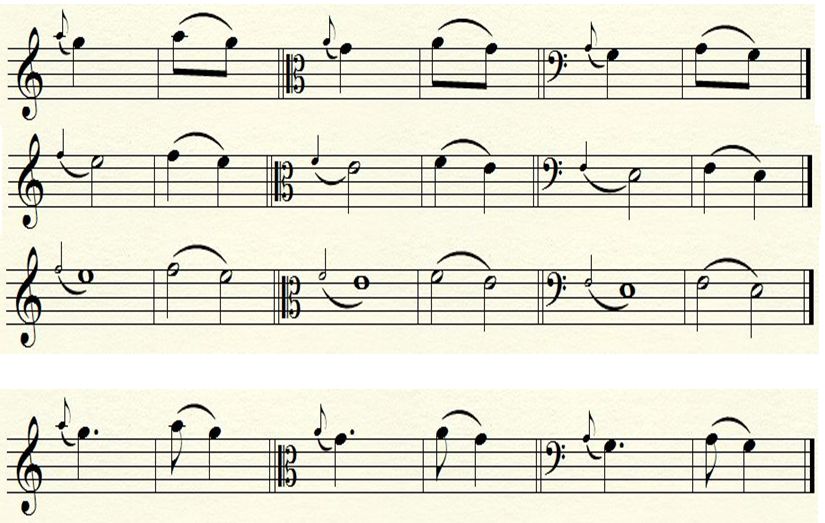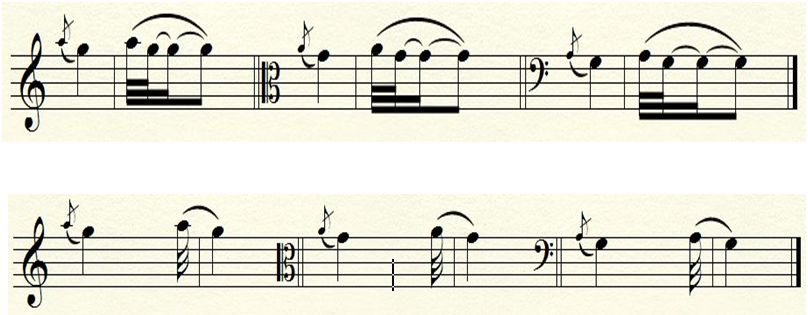GRACE NOTES
If there was a contest for the “most controversial ornament,” Grace Notes would win!
The controversy almost always involves whether the grace note should be performed before the note they are attached to, or on the beat.


One fact upon which most everyone agrees, is that Grace Notes are to be performed quite rapidly. The confusion about how grace notes should be performed, rests in the fact that over many centuries, performance practices have changed immensely.
Grace notes are printed smaller than standard notes. (Usually 60%)

Grace notes can be of any rhythmic duration, appear as only 1 grace note or as a series of multiple notes. Grace notes are most often notated as eighth notes or sixteenth notes, and may also include a slash crossing through the stem, or flag.
APPOGGIATURA
Appoggiatura comes from an Italian word meaning “to lean.” An Appoggiatura’s duration, is equal to approximately half the length of the pitch that it is ornamenting.

Appoggiaturas get 1/3 the duration in compound-time.
Appoggiaturas are performed by leaning the note into the main pitch and usually appear without a slash notated.
Appoggiatura Examples
ACCIACCATURA

Acciaccatura comes from an Italian word meaning “to crush.”
In early keyboard music, composers often indicated that acciaccatura notes were to be performed “crushed together” at the same time and then released. This method allows the main note to ring.
Acciaccaturas are fast grace notes, performed on the beat.
CRUSHED: Performed ON the beat.
ANTICIPATED: Performed BEFORE the beat.




